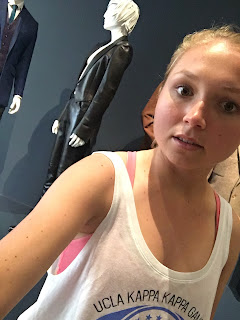This week’s lesson on space was definitely
my favorite one that we have learned about so far this quarter. I really
enjoyed all of the lectures because they fully captured the content of this
course, which are art and science, and illustrated how space brings the two
together, thus developing a third culture. I think space in itself is a culture
of its own. It has been studied for hundreds of years and only continues to
grow and expand with each new development that arises. In the first lecture,
Professor Vesna discussed the history to space exploration and the origin of
its roots. Understanding this background is essential to understanding the
topic of space as a whole because each new theory has been developed upon the
last ones.
The main connection to art that I made
during these lectures on space was between science and science-fiction. In
Lecture One, Professor Vesna discusses how science fiction has offered ideas
that scientists have followed. For example, the idea of a space station was
first described in science books in the 1920’s. This was then shortly followed
by the creation of an actual space station. It is so interesting to learn how
the fields of art and science have come together and helped further the other
field along. This is truly an example of a third culture being developed and it
is all due to the overall study of space, which has brought these things
together.
I also thought it was so
interesting to hear how nanotechnology has aided scientists in studying space.
The molecules being detected in space are helping add to the discoveries. Learning
this made me realize just how interconnected all of these topics are that we
have been studying. This is again why I loved this week’s lecture because it
brought all of them together to show that a third culture is already beginning
to exist between art and science.
Works Cited
"A Brief History of Space Exploration." The
Aerospace Corporation. The Aerospace Corporation,
n.d. Web. 27 May 2016.
Dunbar, Brian. "Telescope History." NASA.
NASA, 23 Dec. 2003. Web. 27 May 2016.
Hamilton, Calvin J. "Space History Introduction." Space
History Introduction. Solar Views, n.d.
Web. 27 May 2016.
"Nanotechnology in Space." Nanotechnology in
Space. N.p., n.d. Web. 27 May 2016.
"Nanotechnology in Space." Nanowerk. N.p.,
n.d. Web. 27 May 2016.









